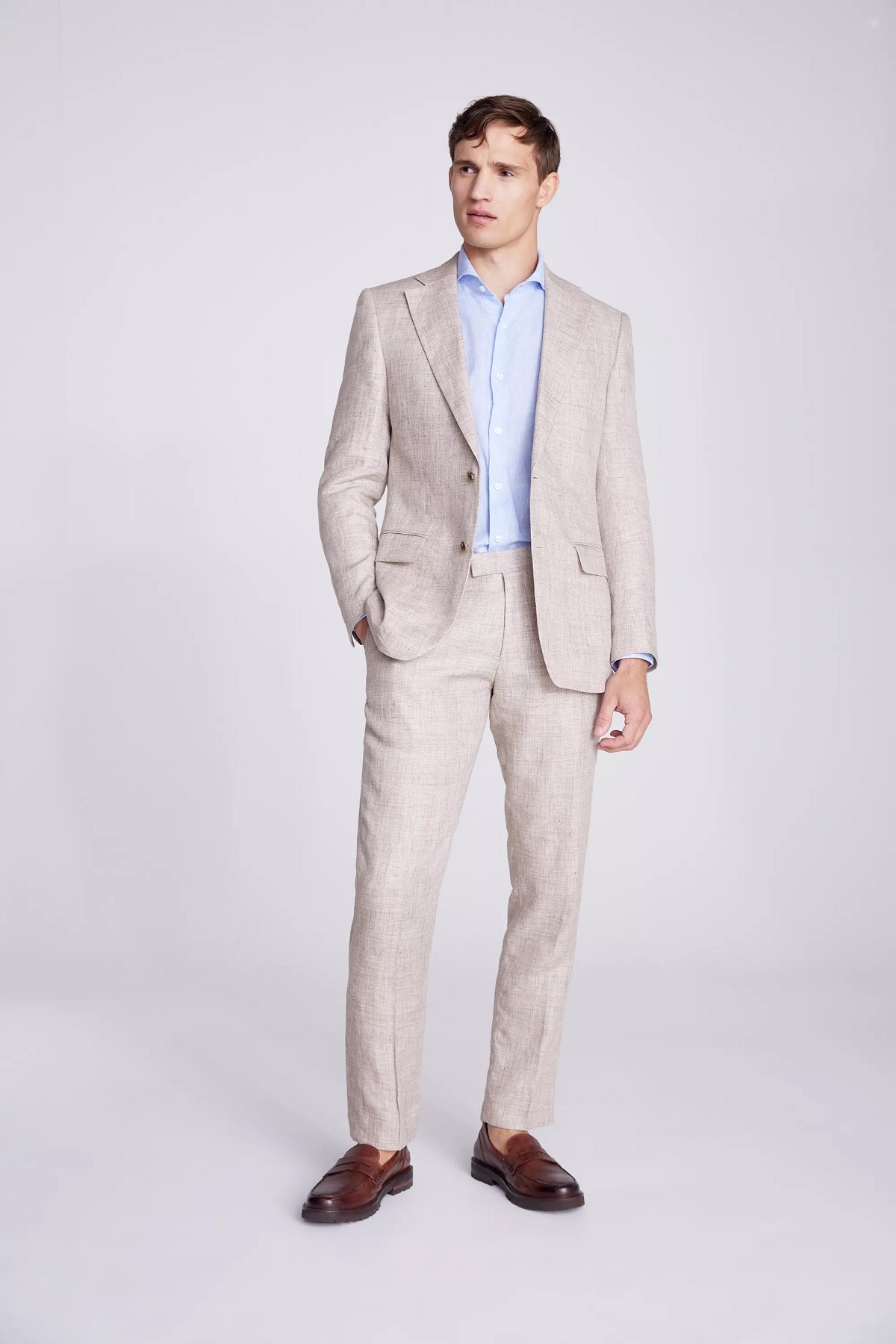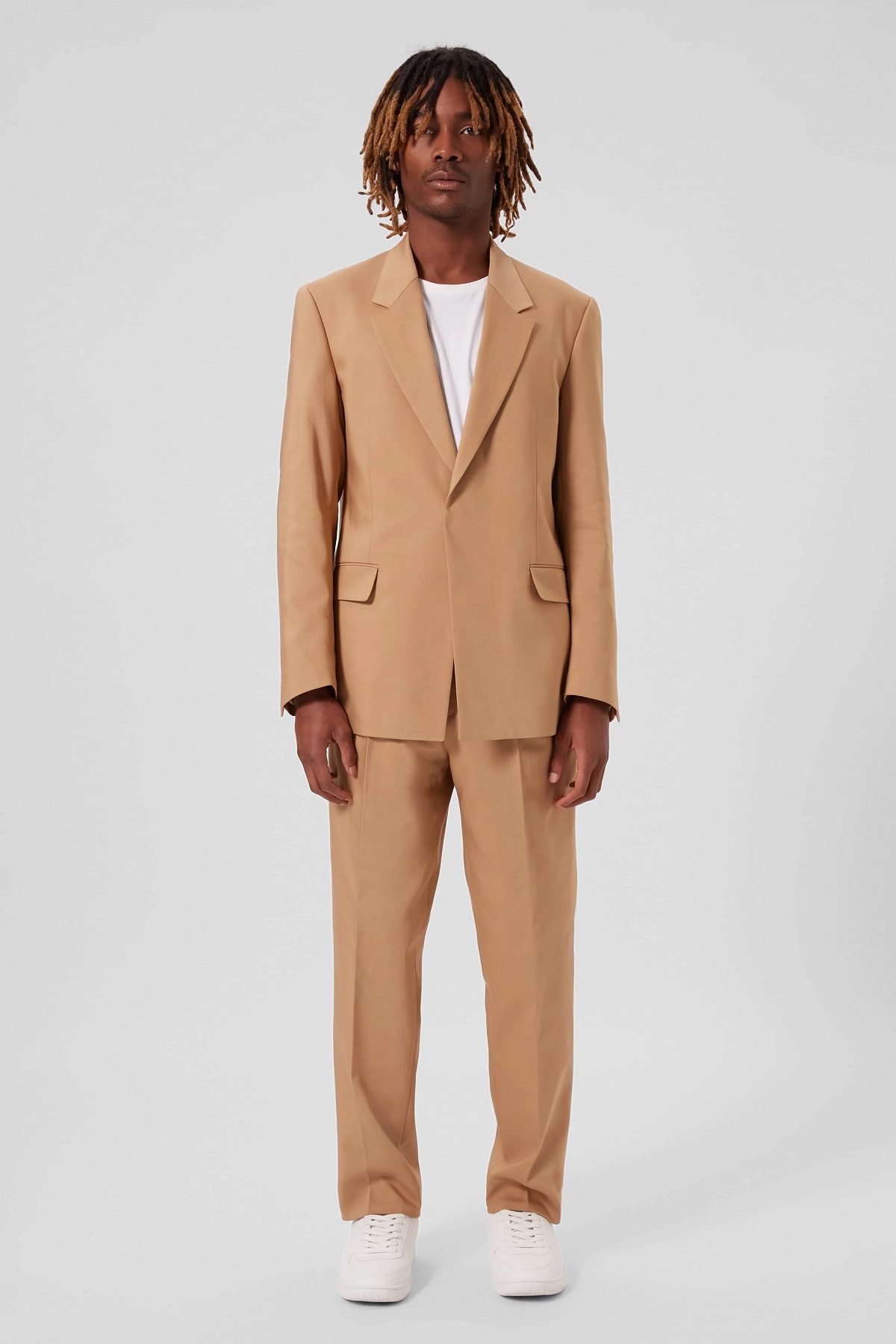1
HOME > Business >
CAN SUITING AND MEN’S FORMALWEAR BE SUSTAINABLE?
Written by Ivan Yaskey in Business on the 3rd May 2023

Across men’s and women’s styles, the conversation surrounding sustainability frequently veers toward fast fashion. Excessive use of polyester, thousands of styles churned out weekly, and environmentally damaging practices from harmful dyes to excessive textile waste make this a logical starting point. But, moving up in price doesn’t suddenly make clothing more sustainable: Yes, a store might not have an entirely new inventory every week, but fabric sourcing and construction still make an impact.
Formalwear – suiting specifically for menswear – makes up a keystone of capsule wardrobes – the foundation for versatility, in which all pieces generally work with each other rather than feel like distinct, disparate components. Suits can be worn together with ease – button-fronts to T-shirts and knits, based on the occasion – or, more commonly, broken up into suit separates for more polished everyday dressing. For the most part, we tend to assume that men’s suiting is more sustainable than, say, polyester workout gear or a rayon shirt. The difference isn’t always so absolute, however. Generally, sustainable suiting and men’s formalwear fall into three categories:

Vintage and Secondhand
We’re not suggesting that you rock a leisure suit just because, or that you have to settle for some shapeless and awkward-fitting ‘90s relic. Rather, shopping for secondhand suiting mirrors dress-for-success-on-a-budget advice: Look for something neutral that fits you, and get it tailored to your body shape. At the same time, avoid anything overtly trendy or that doesn’t fit most office and cocktail dress codes: As such, some teal polyester combination with flared trousers feels extreme, at least for capsule dressing, but could make a serviceable casual suit. Shopping online, as well as in person in vintage, consignment, and other secondhand stores, will yield similar results. Refine your search by knowing your exact measurements, and follow the basic rules for alterations: Adjustments are more easily done on a larger-fitting garment. Secondly, trousers lend themselves more toward hemming and other adjustments over a suit jacket. The sustainability angle, at this point, is fairly logical and direct: Nothing new is being created, and you’re repurposing something that’s already out there. Suiting, too, reflects the trajectory of clothing production over the decades: Garments made in the ‘80s and previous periods often hold up better and show less wear than those manufactured in the ‘90s toward the present.

Rentals
Much of the talk around renting formalwear focuses on services like Rent the Runway or Vestiaire Collective – or paying a fee for couture or simply higher-end garments you’ll wear just once. Rental services for menswear haven’t quite gone in this direction: You can’t quite rent a Zegna or Armani suit (but the concept is growing), but subscription services let you explore everyday capsule basics. Then, there’s the middle-brow tux rental service, where quality varies from off-the-rack to Savile Row tailoring. This direction likely suits someone who needs a suit once or twice per year and has no reason or occasion to wear suit separates. Should you opt for a rental service, read about the quality ahead of time, and also be ready with your exact measurements. Unlike with tailoring a secondhand garment, a rental likely won’t fit you precisely.
New Suiting
Unlike the other two options discussed thus far, finding more sustainable new suiting ends up being a more complex process. Ideally, yes, you’ll want something tailored versus off-the-rack, but more aspects enter the picture here:
Materials
100-percent cotton, linen, wool, or hemp makes the ideal baseline, based on seasonality and how breathable you need the suit to be. Avoid anything with a synthetic lining – cotton is preferred – and look for materials like merino wool that dry quicker and won’t hold onto odors, as they’ll likely need to be drycleaned less frequently, provided you follow through with basic maintenance. From here, sourcing matters:

- Organic over conventional cotton involves fewer environmentally damaging pesticides and may be grown with less water.
- Despite being a natural fiber, virgin wool doesn’t have the smallest environmental footprint, which factors in the land on which sheep graze, the resources they need to thrive, and the process for transforming wool into threads to be woven. Animal cruelty also isn’t taken into account. For a more sustainable source, seek out suiting made with recycled or repurposed wool. Or, look for brands that can trace the source of their wool, speak about how the sheep are treated, and show that they’re making an effort to cut down on water, energy used, and emissions to spin the fabric. Going a step further, consider heritage materials – for example, Shetland wool – as the sheep are raised locally (at least to the U.K.) and the cloth is manufactured in roughly the same location.
- Avoid or limit blended stretch fabrics. While, particularly for shirting, they iron well, they also wear out sooner, potentially puckering or pilling in the process. Should you be looking for this type of fit for something you wear less frequently, attempt to find fabrics made with recycled polyester or plastic bottles, rather than virgin sources.
- Realize that certain heavier-weight, unblended materials – for example, 100-percent tweed – can have a decades-long lifespan.
- Don’t forget about fasteners, threads, and glue. Synthetics across the board remain, even when the clothing fibers degrade. In turn, look for linen or cotton threads, metal zippers, coconut or corozo buttons, and non-synthetic binders.
Construction
With new suiting, you have three potential choices. One, off the rack is the most affordable, but construction methods may reflect fast fashion. Beyond the quick-to-show-wear polyester and murky-to-potentially unethical labor, this essentially assembly line approach generates high amounts of fabric waste. It’s estimated that about 25 to 40 percent of all fabrics end up as waste at the front of the textile industry’s pipeline, including through pattern cuttings, samples, and defective materials. Two, there’s made-to-measure – something you can have crafted in person or online through a premade pattern sized to your body. Unlike with off-the-rack suiting, this approach doesn’t anticipate projected inventory and, instead, is typically based on what a customer is looking to have designed. Three, bespoke or tailored suiting uses the least amount of fabric. A pattern is created specifically to your body and vision, and the amount of fabric used reflects this specificity and efficiency. You’re also likelier to end up with a suit that fits as closely as possible and, frankly, doesn’t feel like a compromise every time you put it on.

Additional Considerations
For making a more ethical, sustainable suiting purchase:
- Look at the full supply chain and emissions of a suit: Transparency gets you started. Also assume that a lack of transparency can mean a brand is hiding something. As a baseline, know where and how the fabric was manufactured, and know how many hands along the supply chain it passed through. With suiting, the simplest and often lowest emissions pathway is locally made heritage fabrics passed to a local tailor. Should your options involve off-the-rack or made-to-measure, look for Oeko-TEX, GOTS, bluesign, or Certified B Corp designations.
- Automatically treat it like an investment: Keep that purchasing-for-life mentality: Expect to wear this garment for every event that calls for it, rather than have it around for a few years. Think about how often you’ll wear it, and the versatility and sturdiness needed to fulfill this objective.
- Make a plan to repair your suit: Over the years, the press has captured King Charles III in clothing that’s been visibly repaired and that he’s owned for at least a decade or longer. This longevity comes down to construction but also encompasses maintenance. Get in the habit of brushing your suit down – this dislodges dirt and debris before they have a chance to settle – and know who to call to make adjustments that go beyond a simple mending.

Trending
2
3
4
5
6
7
8
9
10










